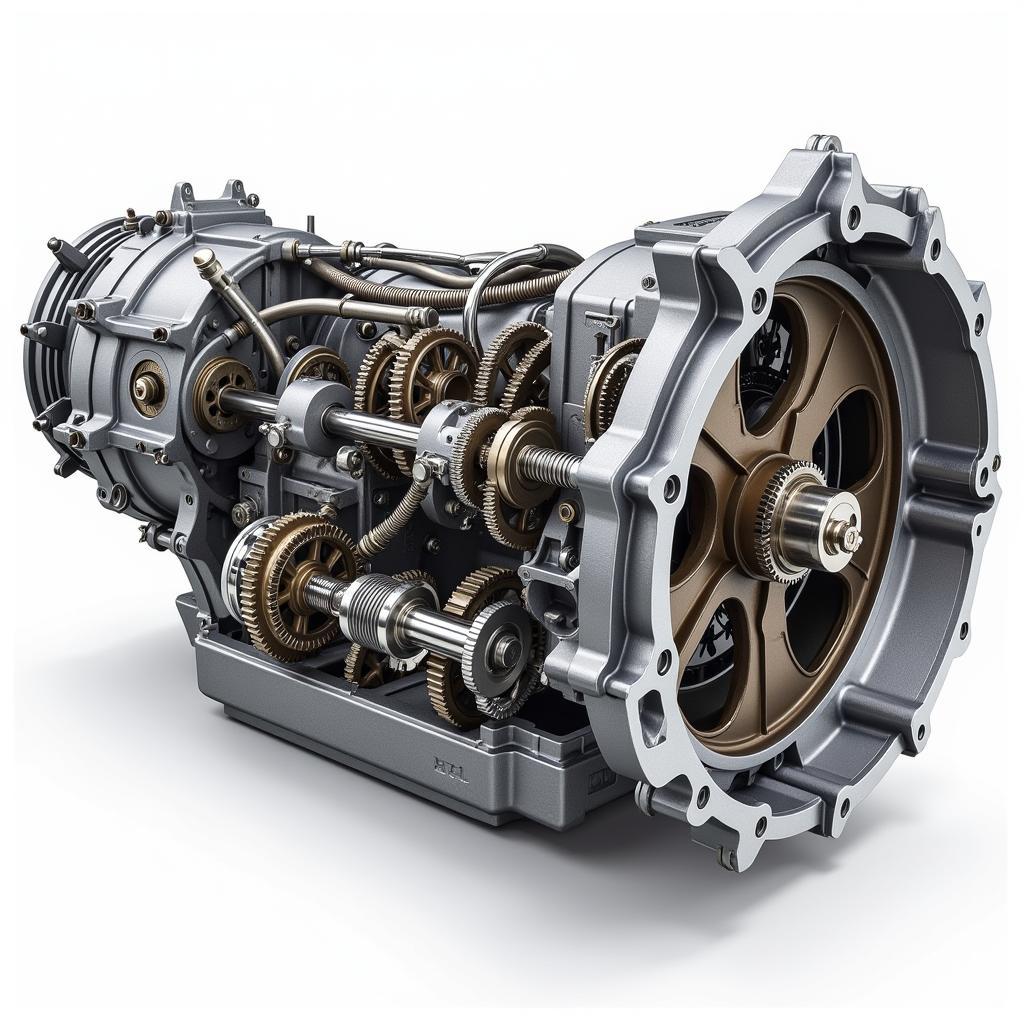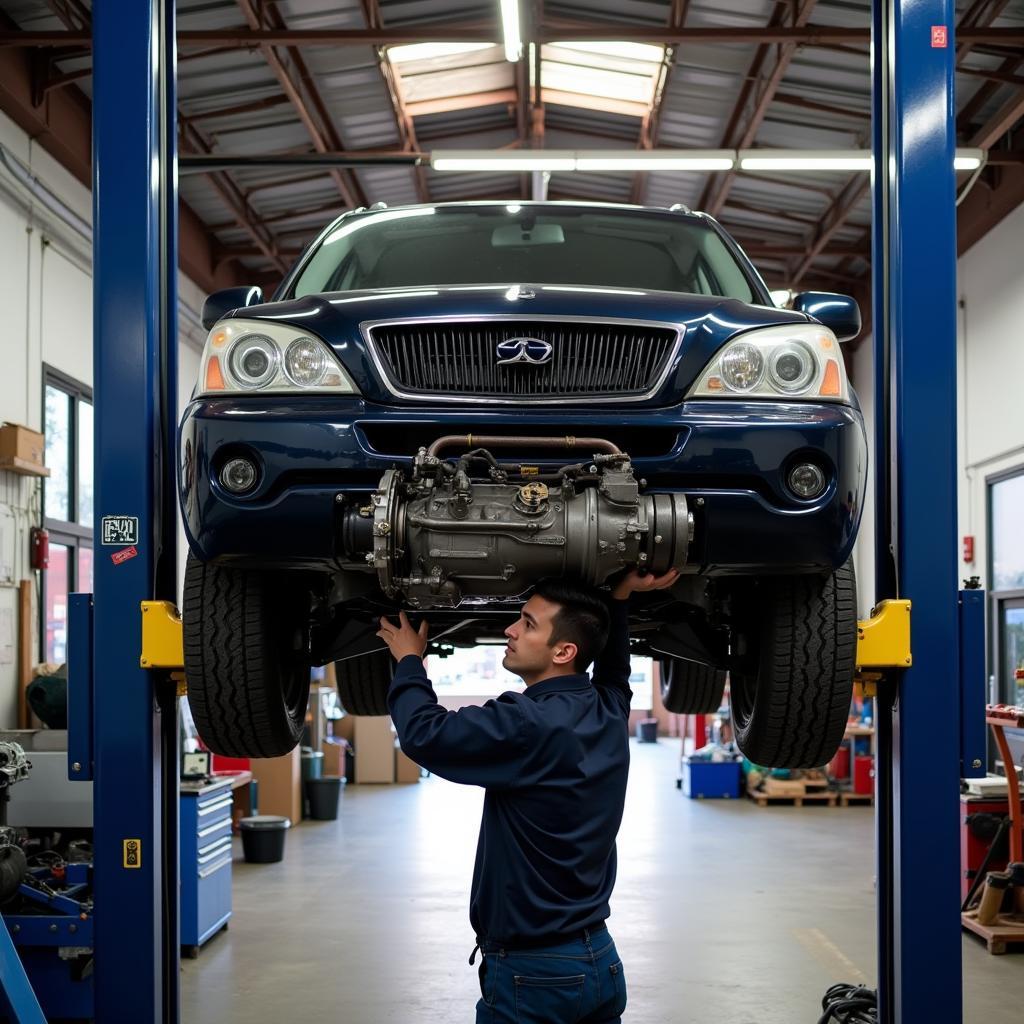It’s never fun to deal with car problems, especially when they’re as complex as transmission issues. But before you panic, understand that not all transmission problems are catastrophic. Some are minor and can be easily resolved. Knowing how to recognize transmission issues and what to do about them is crucial for ensuring your safety and preventing bigger problems down the line.
Common Signs of Transmission Problems
Transmission problems can manifest themselves in several ways. It’s important to be aware of these symptoms and take action as soon as you notice them.
1. Shifting Problems
One of the most common signs of transmission trouble is difficulty shifting gears. You might notice:
- Sluggish acceleration: The car hesitates or takes longer to accelerate when you press the gas pedal.
- Rough shifting: You feel jolts or bumps as the car shifts gears, especially when going from first to second gear.
- Inability to shift: The transmission might not shift into a higher gear, or it might get stuck in a specific gear.
- Slipping gears: The car feels like it’s slipping out of gear, especially when climbing hills or accelerating quickly.
2. Unusual Noises
A healthy transmission should operate quietly. If you hear unusual noises, it could indicate a problem. Common transmission noises include:
- Whining noise: A high-pitched whining sound, often heard when accelerating or decelerating.
- Grinding noise: A harsh, grinding sound, especially during gear changes.
- Clunking noise: A loud clunking sound, especially when shifting gears.
3. Fluid Leaks
Transmission fluid is essential for the proper operation of the transmission. Leaks can indicate serious problems.
- Red or pink fluid: If you see a red or pink fluid under your car, it could be transmission fluid.
4. Check Engine Light
While the check engine light can indicate a variety of problems, a flashing light is often associated with transmission issues. This should be addressed immediately.
What to Do When You Suspect Transmission Problems
If you experience any of the symptoms described above, it’s crucial to address the problem promptly. Here’s what you can do:
- Check the transmission fluid level: A low transmission fluid level can cause numerous issues. Check your owner’s manual for instructions on how to check the fluid level.
- Get a professional inspection: If you’re unsure about the issue, take your car to a reputable mechanic for a comprehensive inspection.
- Don’t ignore the problem: Driving a car with transmission problems can lead to further damage and costly repairs.
How to Prevent Transmission Problems
While there are many variables beyond your control, there are steps you can take to minimize the risk of transmission problems:
- Regular maintenance: Follow your car’s recommended maintenance schedule, including regular transmission fluid changes.
- Avoid harsh driving: Avoid aggressive acceleration, braking, and high-speed driving, as these can put undue stress on the transmission.
- Use the correct transmission fluid: Ensure you’re using the right type of transmission fluid as specified in your owner’s manual.
- Keep an eye on the check engine light: If it comes on, don’t ignore it. Get it checked out immediately.
What Causes Transmission Problems?
Transmission problems can be caused by a variety of factors, including:
- Low transmission fluid: Insufficient fluid can lead to overheating and damage to internal components.
- Contaminated fluid: Dirty or contaminated transmission fluid can compromise its ability to lubricate and cool the transmission.
- Worn-out components: Transmission parts like clutches, gears, and seals wear down over time.
- Overheating: Driving in stop-and-go traffic or in extreme temperatures can cause the transmission to overheat.
- Improper maintenance: Neglecting regular transmission maintenance can lead to problems.
 Internal components of a car transmission
Internal components of a car transmission
Is It Time for a New Transmission?
When a transmission starts to show signs of trouble, it can be a stressful experience. Deciding whether to repair the existing transmission or replace it with a new one requires careful consideration.
Factors to Consider:
- The age and mileage of your car: Older cars with high mileage are more likely to experience transmission problems.
- The extent of the damage: Minor transmission problems might be relatively inexpensive to fix, while major issues could necessitate a replacement.
- The cost of repairs: Transmission repairs can be expensive, so it’s important to get quotes from multiple mechanics and weigh the costs against the value of your vehicle.
Should You Replace Your Transmission?
- **[quote-1|transmission-repair-vs-replacement|It’s often cheaper to fix the existing transmission than to replace it. A good mechanic can assess the damage and offer a range of repair options.|expert quote]
- [quote-2|transmission-replacement-advice|When the transmission issues are severe and repairs exceed the value of the vehicle, it’s probably time to consider a replacement.|expert quote]
If you’re struggling to decide whether to repair or replace your transmission, it’s best to consult with a qualified and trusted mechanic for an unbiased opinion.
Can I Drive With Transmission Problems?
- **[quote-3|driving-with-transmission-problems|Driving with transmission problems is risky. You could experience sudden loss of power, which could lead to an accident. It’s best to have the issue addressed as soon as possible.|expert quote]
Driving with transmission problems can be dangerous. You might encounter sudden loss of power, making it difficult to accelerate, especially during critical situations. It’s best to get the issue addressed as soon as possible to avoid further damage and ensure your safety.
Frequently Asked Questions
Q: How long can I drive a car with transmission problems?
A: It’s not recommended to drive a car with transmission problems for an extended period. The longer you wait, the more damage can occur, and the more expensive the repair will be.
Q: How much does it cost to repair a transmission?
A: The cost of transmission repair can vary greatly depending on the type of problem, the make and model of the car, and the labor costs in your area. It’s best to get quotes from multiple mechanics to compare prices.
Q: How can I find a good mechanic for transmission repairs?
A: Ask for recommendations from friends and family. Check online reviews and ratings on sites like Yelp. You can also contact your local AAA or other automotive clubs for referrals.
Q: Should I use a transmission flush or add a stop-leak product?
A: Transmission flushes and stop-leak products are not always recommended. They can potentially cause more damage and should only be used on the advice of a mechanic.
Q: What are the signs of a slipping transmission?
A: A slipping transmission often exhibits symptoms like delayed acceleration, a feeling of “slipping” out of gear, especially during hill climbs or acceleration, and difficulty shifting.
Q: Is it worth repairing a transmission in an older car?
A: This depends on the age and condition of the car, the extent of the damage, and the cost of repair. Sometimes it makes more sense to invest in a new transmission, while other times it may be more cost-effective to repair the existing one.
If you’re facing transmission problems, you’re not alone. By understanding the signs, taking prompt action, and seeking professional advice, you can avoid costly repairs and keep your car running smoothly.
 Car being serviced for transmission issues at an auto repair shop
Car being serviced for transmission issues at an auto repair shop
AutoTipPro can provide you with reliable and expert assistance for your transmission issues. Contact us today at +1 (641) 206-8880 or visit us at 500 N St Mary’s St, San Antonio, TX 78205, United States. We’re here to help you get back on the road safely.




Leave a Reply